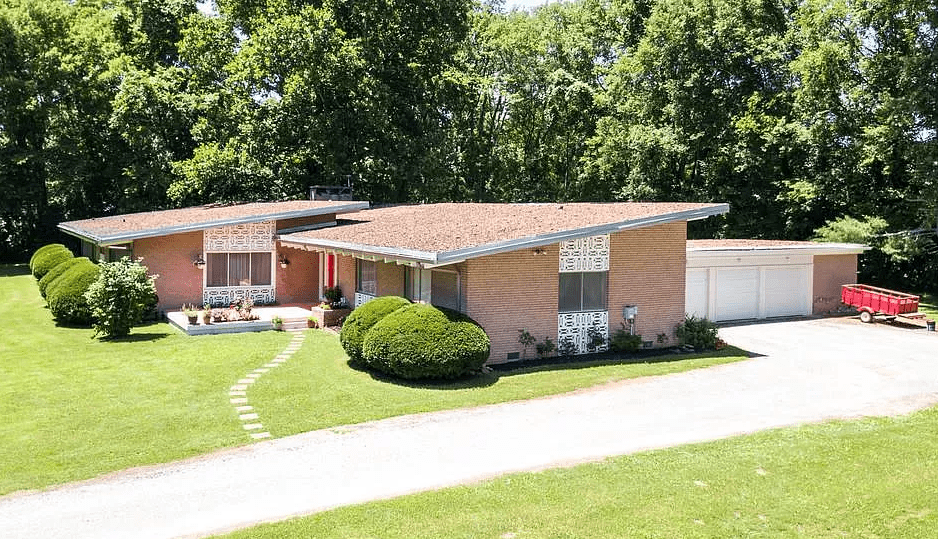Sites to Save
The Heritage Foundation of Williamson County, TN, has compiled its fourth annual Sites to Save list, which seeks to identify historic places in Williamson County that are vulnerable to demolition, development or neglect.
The Sites to Save list is designed as a tool to help the community come alongside the Heritage Foundation in its efforts to raise awareness of Williamson County’s significant historic, cultural, geographical and archaeological resources, including buildings, structures, cemeteries, historic districts, archaeological sites, natural and cultural landscapes, while respecting the rights of property owners whose land may include such resources.
Sites To Save - 2024 Class
Pryor Lillie Works
Includes: Beechwood Hall (1856), Grasslands (1802, 1850), and Old Town (1846)
Photo of Beechwood Hall, March 2024. Anna Marcum.
WHY: Pryor Lillie built three of the most significant antebellum homes in Williamson County. To have an extant portfolio of an antebellum builder's work in Williamson County is extremely rare and these properties should be preserved as a group.

Williamson County Cemeteries
Pictured, Frierson-Voorhees Cemetery, Brentwood and Tombstone of the Wife of Dr. William Searcy Removed from its Original Location, Nolensville. Both images submitted by nominator.
WHY: Intimate family cemeteries are abundant in Tennessee and an important feature of the state's landscape. As more folks move to Middle Tennessee and development ramps up, it's crucial that people are on the lookout for these cemeteries and are aware of how to appropriately handle them.

The James Scales House (1885), College Grove/Kirkland
James Scales House, 2014. Wikipedia.
WHY: The James Scales House is a lovely example of Eastlake Victorian architecture and the I-house form in Williamson County. Despite the land around it being used as construction storage, the home still retains a remarkable amount of its Eastlake decoration on the porch.

Williamson County Dry Stack Stone Walls
Dry stack stone walls in Williamson County. Both images submitted by nominator.
WHY: These walls are a defining feature of the Tennessee landscape that are not protected by any kind of historic preservation ordinance. With rapid development, many are being lost simply because people don't understand their significance.

Williamson County Mid-Century Modern Homes
The Tucker Home, Architect Burney Tucker, Brentwood, 1967. Photo courtesy Zillow.
WHY: As the construction of I-65 progressed through Williamson County in the 1950s and 60s, towns along the interstate route exploded in growth and along with that growth came a number of lovely Mid-Century Modern homes. Many don’t see the historic value in modern architecture, but these homes are not only an excellent example of the style but also indicative of an important part of Williamson County’s recent history.

Commitment To Advocacy
Our Commitment
For each of the sites on the list, staff at the Heritage Foundation of Williamson County plan to:
- Attend relevant public meetings that involve the sites on the list.
- Consult with willing property owners and municipalities about the history of the property and offer insight on preservation and restoration.
- Connect willing property owners with construction and preservation experts related to the needs of the site.
Get Involved
The Heritage Foundation hopes the Sites to Save list will help make locals aware of the historic sites around them, as well as educate newcomers to the area. To donate to the Foundation’s preservation efforts, including supporting the Sites to Save program, visit WilliamsonHeritage.org/Donate.
Our Commitment
For each of the sites on the list, staff at the Heritage Foundation of Williamson County plan to:
- Attend relevant public meetings that involve the sites on the list.
- Consult with willing property owners and municipalities about the history of the property and offer insight on preservation and restoration.
- Connect willing property owners with construction and preservation experts related to the needs of the site.
Get Involved
The Heritage Foundation hopes the Sites to Save list will help make locals aware of the historic sites around them, as well as educate newcomers to the area. To donate to the Foundation’s preservation efforts, including supporting the Sites to Save program, visit WilliamsonHeritage.org/Donate.